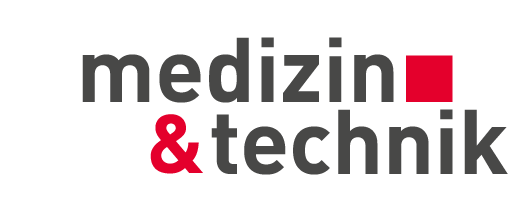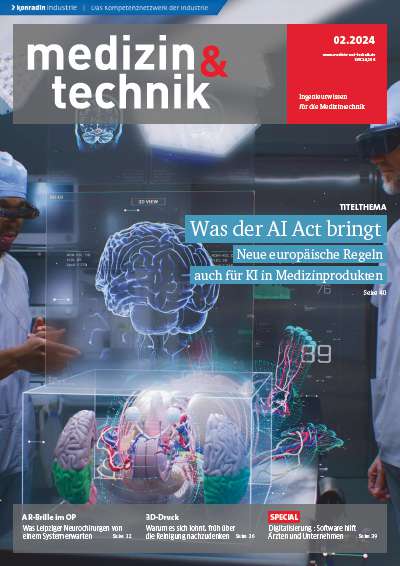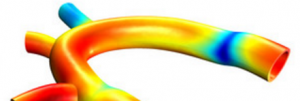Ultimately the design for the new C-arm hardly left any room for the drive that would need to double the speed of movements and meet all safety requirements. Experienced specialists found a solution, despite the numerous hurdles that had to be overcome.
There are drives for mobile x-ray systems that are not a challenge for experienced drive experts—when an economically attractive product is needed that meets the medical technology specifications and normal technical requirements, standards can be used to satisfy the need.
Yet there are also drives that have to meet very particular requirements, and these drives were needed for the new generation of C-arms that the Nuremberg-based company Ziehm Imaging GmbH brought to the market under the name Ziehm Vision: The Development department wanted to take all aspects of the mobile x-ray system’s performance to the limits of what is physically possible, and this also affected the drive technology.
The first to get into a conversation as a partner for this task was Langguth + Co. GmbH, also located in Nuremberg. Langguth has been a supplier of standard drives for many years. “In the first meeting when we were confronted with the requirements for the lifting device, my first reaction was to gulp, and I seriously doubted whether it would be possible to solve these tasks,” remembers Langguth General Manager Gernot Ramsauer. The system was supposed to double in speed compared to similar applications; the loads being moved would be significantly larger; and the drive was supposed to fit into the available space leaving a few small gaps on the frame, which were reserved for the electronic components.
The team was able to clear out these initial concerns over the course of the project. “Everything worked out so well mostly because Ziehm Imaging brought us into the development early on,” comments Ramsauer, “and it was especially very helpful to us to be geographically close.” Many of the problems were solved quickly and without complication in a face-to-face discussion in front of the computer model or prototypes.
Ziehm Imaging’s specifications for the drive technology were initially very high because much higher speeds and accelerations were needed due to the novel control and movement possibilities for the C-arm. The overall dimensions of the device were not allowed to grow any larger, however. As every square centimetre of technical equipment is already an interference on the operative table, the motto was: the smaller, the better. The mechanics had to give way because the electronics for the new generation took up more space. “And the most difficult part was,” added Langguth design manager Stefan Ewert, “that everything had to be interlocked. Every design solved one issue and was quick to introduce another problem.”
Once the question of the spindle torque and its transfer in the gears was solved, it became evident that the motor needed for this is too large. When a modified high-efficiency motor promised a solution, the small gear reduction that was needed meant that there would not be a self-inhibiting worm gear set for fall protection. And there was already no room for an additional safety brake.
Yet, in the end, a solution was found in mechanical development: a special worm-spur gear module was developed. In the middle of the C-arm with the extreme limitations in design space, a very flat spur gear reducer now transfers the motor torque safely to the ball screw spindle. The gear, motor, and brake components found room to fit within the travelling frame.
The solution we sought was not without pitfalls either, however. Special attention had to be given to the processing quality of so many connected gear components because a medical device has to run practically without noise. With 30 years of experience in the production of drives for this industry, the experts at Langguth knew what they had to do.
“And still, the whole project almost failed in the end,” smirks executive direct Ramsauer. The first prototypes demonstrated that the motor control was not able to generate the braking torque at the motors during the downward movement in the 3D mode, which would have been necessary given the load being moved and the specified acceleration ramps. “So we sat down again with the task of building a single-sided brake that is wearless, does not cause heat build-up, takes up hardly any room, and, most importantly, costs next to nothing,” recalls Ramsauer. Together the Langguth design team devised an adjustable oil convection brake that solved these tasks at first go.
“It was a really nice development process where we could demonstrate our abilities in many areas,” acknowledges chief designer Ewert. Ultimately leading to the project’s success was good cooperation between the drive experts and the medical device manufacturer: “We urged and inspired each other.” Each obstacle was approached collectively.
In the end, the Ziehm Vision C-arm became an attractive product, as is seen in the market’s response and in that the device won the Gold Stevie Award in the category of New Product & Product Management – Health and Pharmaceuticals. “Only a small midsized manufacturer is in the position to approach this type of project with the flexibility it requires,” says Ramsauer in closing. “We are proud that we were able to contribute to the success of this project in the area of drive technology.”
Glen Gebhardt Langguth, Nuremberg
Additional information On the C-arm manufacturer: www.ziehm-imaging.de On the drive manufacturer: www.langguth-antriebe.de
Teilen:







